
Figure 1. The flow chart of the project
Developing software systems has become the fastest, most perfect and affordable way of approaching problems using information technology and deriving the best of all possible solutions to meet customer's needs in this world of globalization. This research is an analysis and implementation of a computerised system that is going to be used at the UDS in the Computer Science Department. This is to minimize drastically the numerous challenges associated with the manual system that is currently in use. This system is programmed to connect to an SQL Server which holds the database that serves as the backend data storage for the system. This software basically stores details of student registration and examination result information. It as well stores information of lecturers in the department. This system can be used to create backup files for the database to prevent data loss when events such as illegal alterations of data and natural disaster occur.
Developing software systems has become the fastest, most perfect and affordable way of approaching problems using information technology and deriving the best of all possible solutions to meet customer's needs in this world of globalization.
The Systems Development Life Cycle (SDLC) is the process of understanding how an Information System (IS) can support business needs, designing the system, building it, and delivering it to users. In many ways, building an information system is similar to building a house.
First, the house (or the information system) starts with a basic idea. Second, this idea is transformed into a simple drawing that is shown to the customer and it's refined (often through several drawings, each improving on the other) until the customer agrees that the picture depicts what he or she wants.
Third, a set of blueprints is designed that presents much more detailed information about the house (e.g., the type of water faucets, where the telephone jacks will be placed). Finally, the house is built following the blueprints—and often with some changes and decisions made by the customer as the house is erected. The SDLC has a similar set of four fundamental phases: planning, analysis, design, and implementation.
This paper follows all the four elements of the SDLC aforementioned.
There are a number of issues students faced both in/out of campus. Some of such is as follows:
All these issues will usually lead to a reference to the head of the department for rectification. This is therefore called for the need to have a concise and an accurate system of keeping records.
Records of staffs in the various departments are poorly kept as well.
According to (Welman et al., 2004), research methodology is an organised way comprising of sequences, procedures and systems to manage and run a research process.
A methodology is usually a guideline system for solving a problem with specific components such as phases, tasks, methods, techniques and tools. It can be also defined as follows:
Research can either be quantitative or qualitative.
The quantitative research method seeks to establish relationships and to explain causes of changes in measured social facts (White, 2003). According to (Bless et al., 1995), qualitative research uses qualifying words or descriptions to record aspects of the world. (Olivier, 2004) adds that, with qualitative research, it is the researcher who considers data, selects what is appropriate and processes it in some way.
In another school of thought, methodologies are the methods or organizing principles underlying a particular art, science, or other area of study (Microsoft Student with Encarta Premium, 2009).
In software development, the process of solving customers' problems by the systematic development and evolution of large, high quality software systems within cost, time and other constraints is called Software Life Cycle Development Model (SLCDM). (Wikipedia Encyclopedia, 2008). There are various models that can be used to achieve the production of software Model – a process which comprises identifiable stages that the software product goes through during its life time. Examples of SLCDM include waterfall, iterative and prototype life cycle models among others (Stephen R, 2010). Different methodologies can be applied for different projects.
This research will be based on the prototype methodology which includes the development of prototypes; however, throwaway prototypes may be employed at some point in the SDLC.
The prototyping/ throwaway prototyping-based methodologies have a relatively thorough analysis phase that is used to gather information and to develop ideas for the system concept. Many of the features suggested by the users may not be well understood, however, and there may be challenging technical issues to be solved. Each of these issues is examined by analysing, designing, and building a design prototype. A design prototype is not a working system; it is a product that represents a part of the system that needs additional improvement, and it contains only enough detail to enable users to understand the issues under consideration. After the design of prototype is accepted, it is either built upon the prototype, or thrown away for the real software to be built; that’s the throwaway prototype.
Some tools to be employed are:
Systems are created or made to solve problems. A system is defined as a collection of components that work together to realize some objectives. Basically there are three major components in every system, namely input, processing and output. (Goodland et al, 2004)
Some systems share common characteristics including:
This term ‘system’ may also refer to a set of rules that govern the structure and/or behavior. (Stephen R, 2010)
Literally every University on the surface of the planet do register its student and may allow submission of registrations via an electronic system or paper based system (manual system).
Apart from academic services, higher education institutions (HEI) provide various other services to its students. While education is the main goal, students also need to be supported in other areas of their student life by first-rate service provision. This includes the administrative aspect, which comprises Registration, financial support, library, information services and much more. These administrative services go hand in hand with academic services. Administrative services and academic services are mutually dependent. For example, a student cannot register, gain access to the library, receive any administrative support and not attend classes, because there will be no progress regarding his or her studies. Similarly, a student cannot attend classes without being registered.
Registration is the act of recording names and details on an official list. Students' registration on the other hand is the act of recording school students as present or absent at the beginning of the school day, or the time or session at which this takes place.
Submission is showing or the giving of something to someone in authority for them to consider or approve. (Longman Dictionary)
Students register in order to be allowed access to the academic and administrative sectors of an academic institution. Registration allows them to choose the courses and subjects they intend to be taught. Once a student registers, he or she becomes eligible to attend classes.
The word registration means the accurate positioning of, or the degree of accuracy in the positioning of, an entity relative to (a) another entity, or (b) an independent frame of reference. A process is step-by-step collection of interdependent actions that together produce outcomes that contribute to the success of an organization. (Chapman et al, 1996:5)
A registration process is the process of formally assigning and recording the enrolment of a student in a class or classes. It is open only to those who have already been admitted or re-admitted to the academic institution, or who are eligible to re-register.
According to (Temple, 2006), the registration process involves step-by-step interdependent actions that together produce outcomes.
Registration at the University is a process that includes:
In an interview with the Faculty Officer of the Faculty of Mathematical Sciences, UDS, it was established that the process of registration starts with a student acquiring a form. The student fills in his or her personal information as required and the subjects for which he or she is registering. Personal information of returning students are already captured on the system, which means that they only need to fill in the subjects they wish to register for. They then proceed to the relevant academic department to obtain approval and signature (The head of the department must sign the form to allow them to study a number of courses per trimester).
Applicants for registration who do not hold the required qualifications may, if they meet all other eligibility criteria for registering, be granted registration subject to the condition that they achieve the required qualification within a specific period.
Registration has many benefits some of which are:
Submission, on the other hand, is the process of delivering an official document or registration form to someone in authority for review or consideration. Submission of documents may be either electronic or manual (paper work). Submitting your document is an effective way of making sure or ensuring your document reaches the supposed destination.
An electronic submission refers to a manuscript submitted by electronic means; that is, via mail, web or electronic medium such as a compact disk, hard drive or USB disk.
Traditionally, a manuscript or a document is referred to anything that was explicitly “written by hand”. However, in popular usage and especially in the context of computers and the internet, the term manuscript (document) may even refer to documents (texts or otherwise) typed out or prepared on typewriters and computers and can be extended to digital photographs and videos, and online surveys too. In other words, any manuscript or document prepared and submitted online or by the use of computers can be considered as electronic submission.
There is no concrete data indicating when and by whom were electronic submissions used for the first time. However, research based Universities in several countries have been encouraging the collection of course registration, assignments and projects in the form of electronic submissions for almost a decade now.
Teachers, professors and teaching assistants often collect course assignments and projects electronically. Electronic submissions are usually collected using a web based system which more often than not also helps in the management of submissions collected and stored on it. (Wikipedia Encyclopedia online)
A Submission Management System (SMS) is a software system, also known as submission processing, that streamlines and eases out collection, tracking and management of electronic submission. Information can be received, authenticated, tracked, stored and distributed electronically. Submission managements systems can be a web based system operating in a browser environment, a COTS based product, or may also be in the form of a desktop application.
Submissions are completed electronically creating an efficient real time process that saves time for both the submitter and the recipient. Usually, a submission management system can take in high volume of data at a faster rate.
A submission management system may be regarded as an application-specific content management system. In essence, such a system can be used an alternative to emails in many situations. (Wikipedia online)
Although submission managements can get pretty complex, there are some features that a submission management system must provide in order for it to be classified under that category. Here is a list of some of those features:
Submission systems like course registration and management systems are basically used in colleges and universities to collect and manage course, registration, projects and assignments in electronic formats. (Wikipedia online)
Widespread adoption and use of submission management systems (especially in the context of academia) has been hampered by several factors that include but are not limited to:
Registration and Submission (DATA) Management System, which has the characteristics of any other system, is a collection of components that work together to achieve a common goal.
Some of the components include:
In computing, databases are sometimes classified according to their organizational approaches. The most prevalent approach is the relational database, a tabular database in which data is defined so that it can be reorganized and accessed in a number of different ways. A distributed database is one that can be dispersed or replicated among different points in a network. An object oriented programming database is one that is congruent with the data defined in object classes and subclasses.
When working with large amount of data, it is important to have good procedures for managing the data.
Computer systems are divided into practically three major classes, which are application software, programming software and system software. Computer hardware and computer system are run by the software system which includes the device drivers, operating system, servers, window system, diagnostic tools and many more. Application software allows end users to accomplish one or more specific (non-computer) task. Typical application includes industrial automation, educational software, business software, computer games, medical software etc. This Computerized Students and Lecturers Management System is another typical example of application software. Application software is mostly used by businesses, but almost every human activity now uses it. A key software required for operating this system is a Database Management System (DBMS).
A database management system (DBMS) is a system that allows to build and maintain databases, as well as to utilize their data and retrieve information from it. A DBMS implements solutions to the database usability requirements above. It defines the database type that it supports, as well as its functionality and operational capabilities. A DBMS provides the internal processes for external applications built on them. The end-users of some such specific application are usually exposed only to that application and do not directly interact with the DBMS. Thus end-users enjoy the effects of the underlying DBMS, but its internals are completely invisible to endusers. Database designers and database administrators interact with the DBMS through dedicated interfaces to build and maintain the applications' databases, and thus need some more knowledge and understanding about how DBMSs operate and the DBMSs' external interfaces and tuning parameters.
(O'Brien, 2001) states that an information system is any organised combination of people, hardware, software, communications networks and data resources that collect, transform and disseminate information in an organisation.
(Stair et al., 2003) confirm that an information system is a set of interrelated components that collect, manipulate and disseminate data and information and provide a feedback mechanism to meet an objective.
In many ways, building an information system is similar to building a house. First, the house (or the information system) starts with a basic idea. Second, this idea is transformed into a simple drawing that is shown to the customer and refined (often through several drawings, each improving on the other) until the customer agrees that the picture depicts what he or she wants. Third, a set of blueprints is designed that presents much more detailed information about the house (e.g., the type of water faucets, where the telephone jacks will be placed). Finally, the house is built following the blueprints and often with some changes and decisions made by the customer as the house is erected.
Therefore, for a RSI Management System (Information System) to qualify or be regarded as a complete and successful system that meets user requirements, it must have the following features:
This system is software that is used to keep the records of registration and submissions done by students, their results and the information of the lecturers in the department of Computer Science at the University for Development Studies (UDS Navrongo Campus). Figure 1 shows the flowchart of the project. This software is designed to connect to a SQL server. This software is basically programmed to:
The entire project consists of 14 classes and 17 forms.
The start-up form is what appears the moment the application is started. It prepares the user for the main program and displays a bit of information about the program and its developers. It looks exactly like the image shown below. Figure 2. Shows the start up form.
The “University for Development Studies” is the name of the program itself. The “Integrating Database” you see over there is the current process the startup form is executing and the “47%” is the progress level of the program (Startup progress). When the progress reaches 100%, the login form starts.

Figure 1. The flow chart of the project
The login form is what appears after the start-up form disappears or after the user logs out from the program. It serves as a security measure to prevent unauthorized access into the database and also into the program. The user enters his or her login details and if accepted by the program (that is, if it matches), allows the user entry into the system. Each user has an access level (either Administrator or User) and this determines the options to be seen by the system user. The Administrator has more functional levels than the normal user. Below is a screenshot of the Login Form shown in Figure 3.
The main form is basically the whole program. It is where all other forms in the program can be controlled. When the main form is closed, the software shuts down. From here, the user can access to all other information or do anything that the program was meant to do. The main form contains eight (8) Menu items. The main form is shown in Figure 4.

Figure 2. Start Up Form

Figure 3. Login Form

Figure 4. Main Form
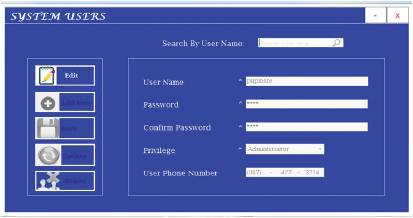
Figure 5. System Users
This is part of the program that allows users of the software to be created. Here, users' information can be deleted or modified. System Users form is shown in Figure 5.
This section allows the user of the program to register degree students from the department. Currently, there are three degree programs offered under the Department of Computer Science. It also allows adding new record of students and modification of courses to be made. The user can add new student information, query student information, add images, and register student courses (deferred, trailed and current courses) and relevant details. Below is a screenshot of the Computer Science registration form. Similar ones are there for the Computing -with -Accounting Students and Information Technology Students. Figure 6. shows the Registration Form.
This section allows the user of the program to register diploma students from the department. There is currently one diploma program offered under the Department of Computer Science. It also allows adding new record of students and modification of courses to be made. The user can add new student information, query student information, add images, and register student courses (deferred, trailed and current courses) and relevant details. Below is a screenshot of the Computer Science diploma registration form in Figure 7.
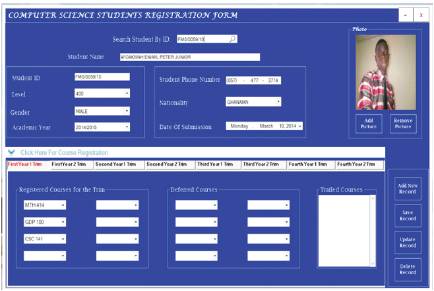
Figure 6. Register Computer Science Degree Students
Here, the degree courses offered in the department are added and stored. This reflects in the registration form of the Degree Students. Courses can be loaded from each year (level). Since there are only three degree programs offered in the department of computer science, only three choices are available. Loading or editing courses for Computer Science courses, Computing-with-Accounting courses and Information Technology courses. Screenshot of the load courses is below in Figure 8.
Here, the diploma courses offered in the department are added and stored. This reflects in the registration form of the Diploma Students. Courses can be loaded from each year (level). Screenshot of the load diploma courses is below in Figure 9.
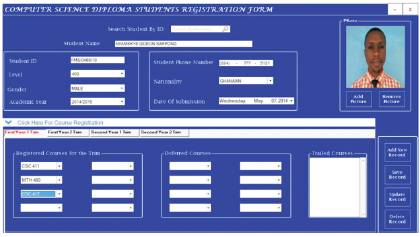
Figure 7. Register Computer Science Diploma Students
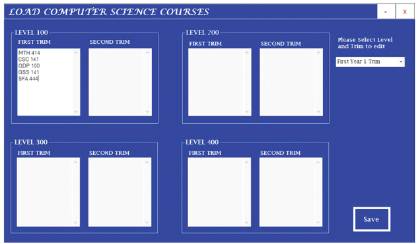
Figure 8. Load Computer Science Courses
Lecturers of the Department information can be stored using this form. Their names, photographs, emails, addresses, telephone and mobile numbers, etc. can be saved into a secured database from here. The information can be retrieved at any point of time if the program is on. Screenshot of the form is shown in Figure 10.
The Results API is used to load results from an excel sheet into the program. From here, the user can edit the content by using a menu item known as Edit Data or save the data read from the excel sheet into an Access Database which could later be retrieved by the program. This means that the program can read any access database file into it. It is good to note that the program only reads the excel sheet starting from a specific point into the program and does read only sheets and not the entire workbook of the excel file.
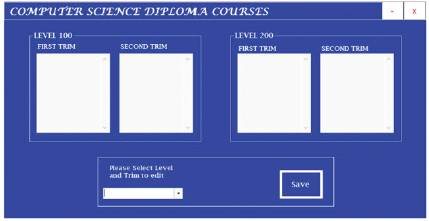
Figure 9. Load Computer Science Diploma Students
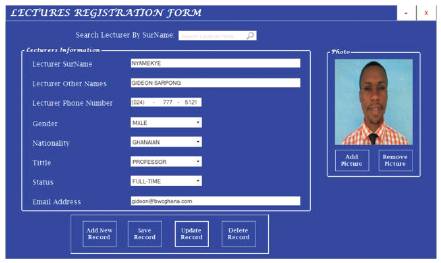
Figure 10. Lecturer Registration Form
The results API showing results of students is shown in Figure 11. The right side shows the sheet fully with serial numbers and remarks from lecturers and the left side shows the sheet with only vital information.
The system is a software system that registers students from the Department of Computer Science, stores their data in a secured database and also stores information about the lecturers in the department. The system connects to an SQL Server database called COMPSCI, which stores, processes and outputs every data passed to it through user friendly interfaces. The software manages information on students, their registration details and staffs of the department. This computerized system will help the institution (Department of Computer Science) solve the numerous problems associated with the manual approach of record keeping and registrations.
This software can be upgraded to meet world standard in the future and hence recommended that, the following can be added to it: